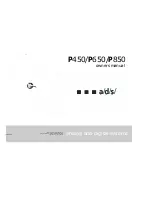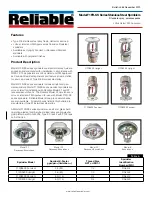
m4a5a_v320_eng (14.02.2013)
- 50 -
Kompetent für Elektroniksysteme
m4a5a_v320_eng (14.02.2013)
- 51 -
Kompetent für Elektroniksysteme
Busy Signal Recognition
If a busy signal is detected, an existing radio => telephone connection is always terminated. Hence,
the conversation is aborted when the telephone participant hangs up. Otherwise, in simplex mode the
busy signal would result in PTT keying until time-out occurs. In the section „Dial Tone Configuration“
several busy signals are noted that are already programmed ex factory. The programming of custom
busy signal types is possible.
Recognition of the Call Connected Signal
After a phone number is called automatically and if the respective line to the telephone participant is
not occupied, the call connected signal is transmitted to the radio. If the telephone participant does not
accept the call, the transmitter is keyed almost all the time by the call connected signal, making the
transmission of a terminating call almost impossible. Hence, a certain time can be defined, in which
the telephone participant has to accept the call. After this time the connection is aborted. It can be set
from 1 to 999 seconds or deactivated (‘0‘). Ex factory, it is set to 45s.
Reg.
Function
368
1
st
- 3
rd
digit: maximum duration of the call connected signal nnn * 1s
Dial Tone Configuration
The EEPROM contains a configuration table for the dial tone recognition. This table defines, which
combinations of tone and break lengths are recognized as call connected signals or as busy
signals.
This table is programmed with two possible call connected signals and four busy signals. In rare
cases, these settings are not sufficient and some signals have to be reprogrammed in or added to
the dial tone configuration table. The table can contain a maximum of 19 entries (registers), each one
defining a repetitive sequence of tones and breaks. By combining several registers more complex dial
tones can be decoded that consist of a combination of tones and breaks exhibiting different lengths.
This way, it can also be programmed to recognize dial tones after they were decoded several times
consecutively.
If new dial tones are to be programmed, the exact durations of the new dial tones have to be known.
In order to simplify measuring the durations, the Major can plot the current durations via the RS232
interface.
Ex factory, the following dial tones are programmed:
call connected signal:
- 1s tone / 4s break
- 1s tone / 5s break
busy sign:
- 400ms tone / 400ms break / 400ms tone / 400ms break
- 500ms tone / 500ms break / 500ms tone / 500ms break
- 240ms tone / 240ms break / 240ms tone / 240ms break
- 160ms tone / 480ms break / 160ms tone / 480ms break
Reg.
Function
380
1
st
digit:
tolerance for dial tone decoding: n * 3,125%
380
2
nd
- 4
th
digit: tone duration for decoding of a permanent tone: nnn * 10ms
380
5
th
- 7
th
digit: break duration necessary for decoding: nnn * 10ms
380
8
th
digit:
display decoded tone durations y/n (2/0)
381 - 399:
1
st
digit:
type of dial tone:
0 = continuation of previous register (decoding of a combination)
1 = call connected signal
2 = busy signal, F = free
2
nd
- 4
th
digit: tone duration: nnn * 10ms
5
th
- 7
th
digit: break duration:nnn * 10ms
















































